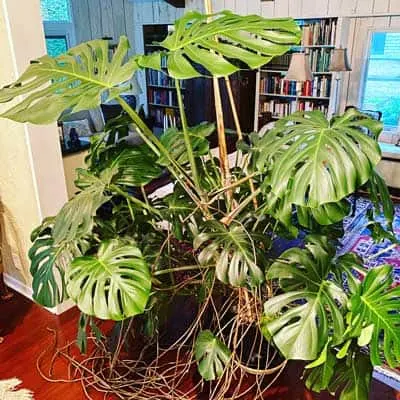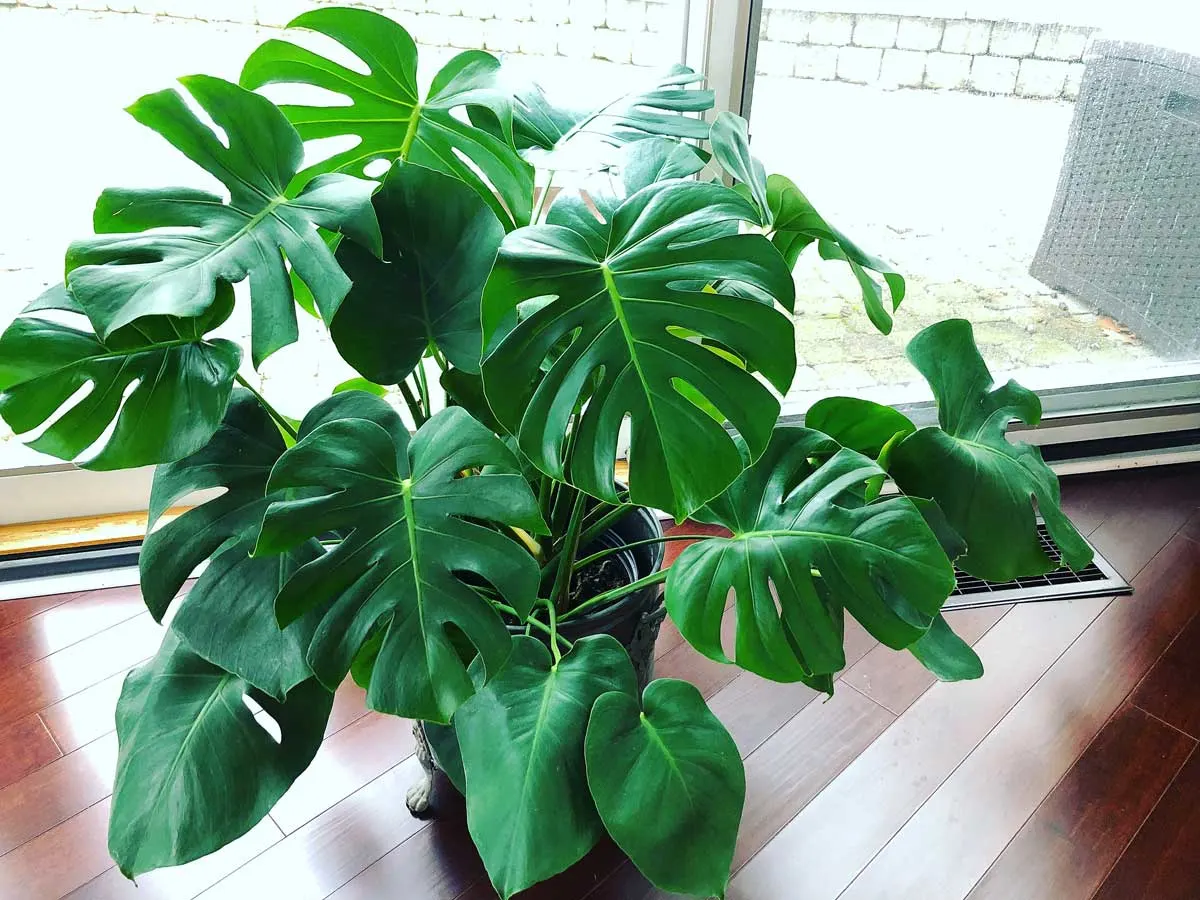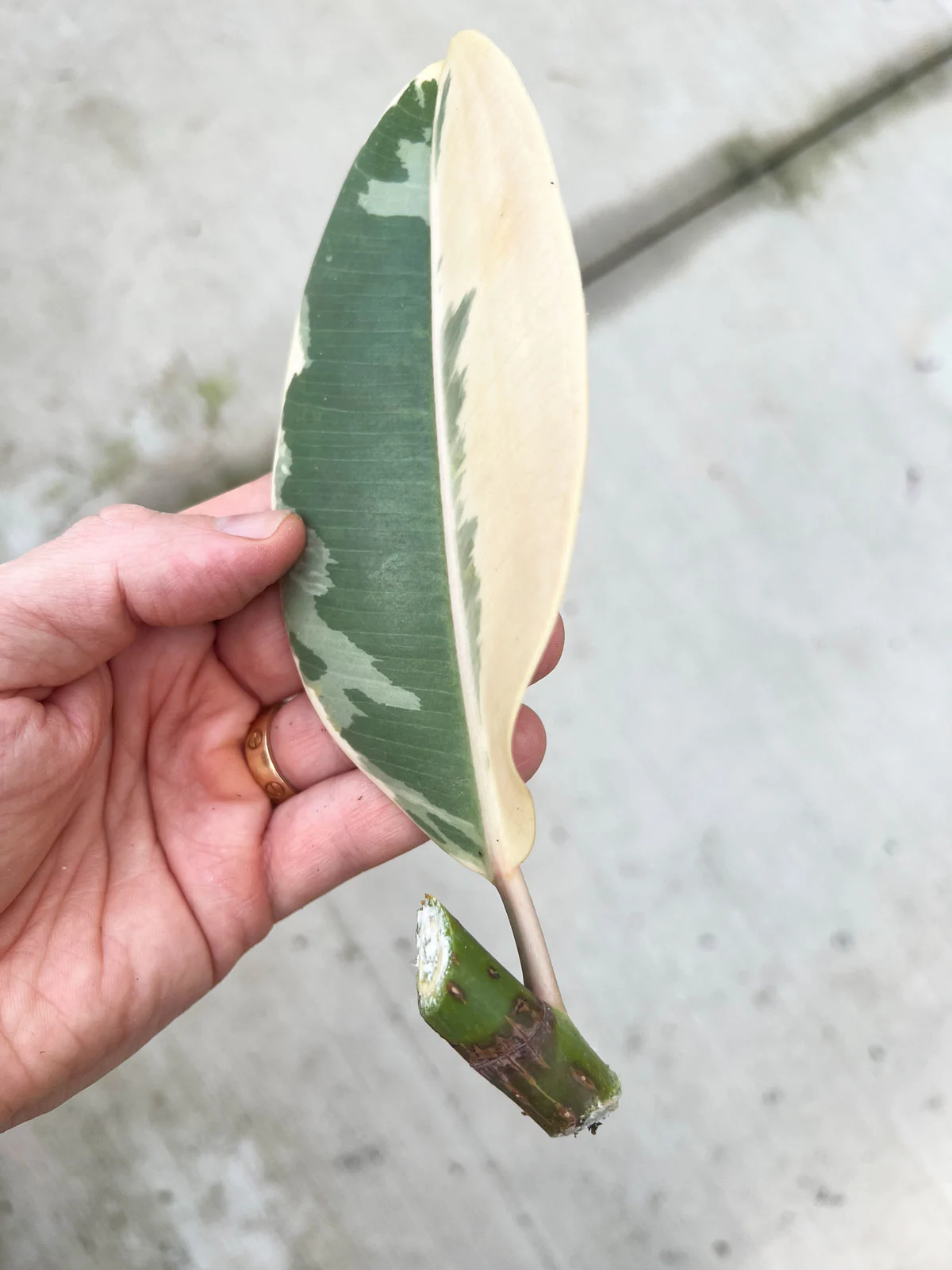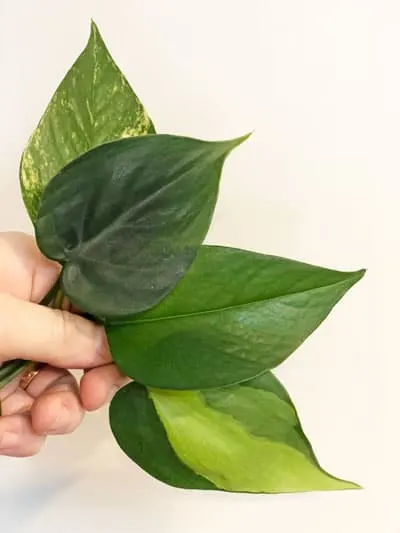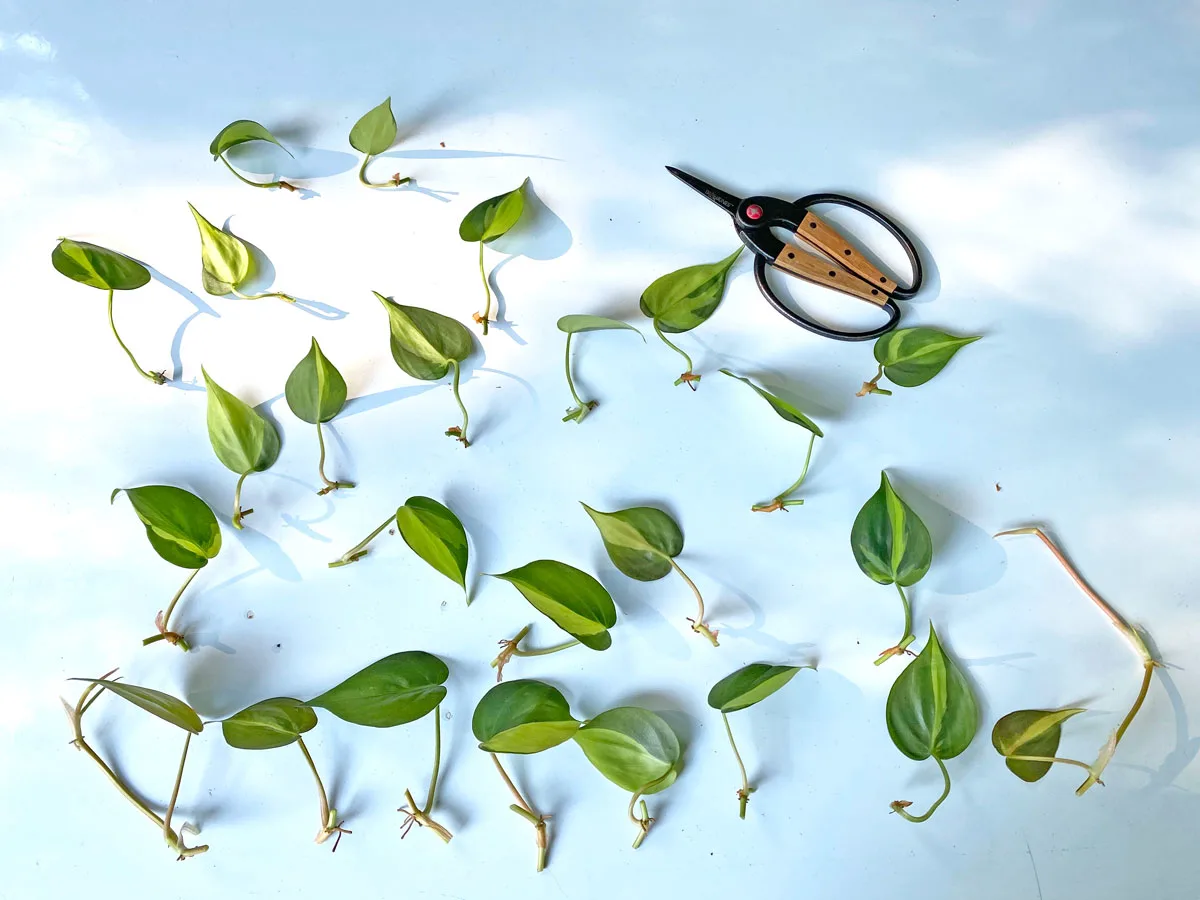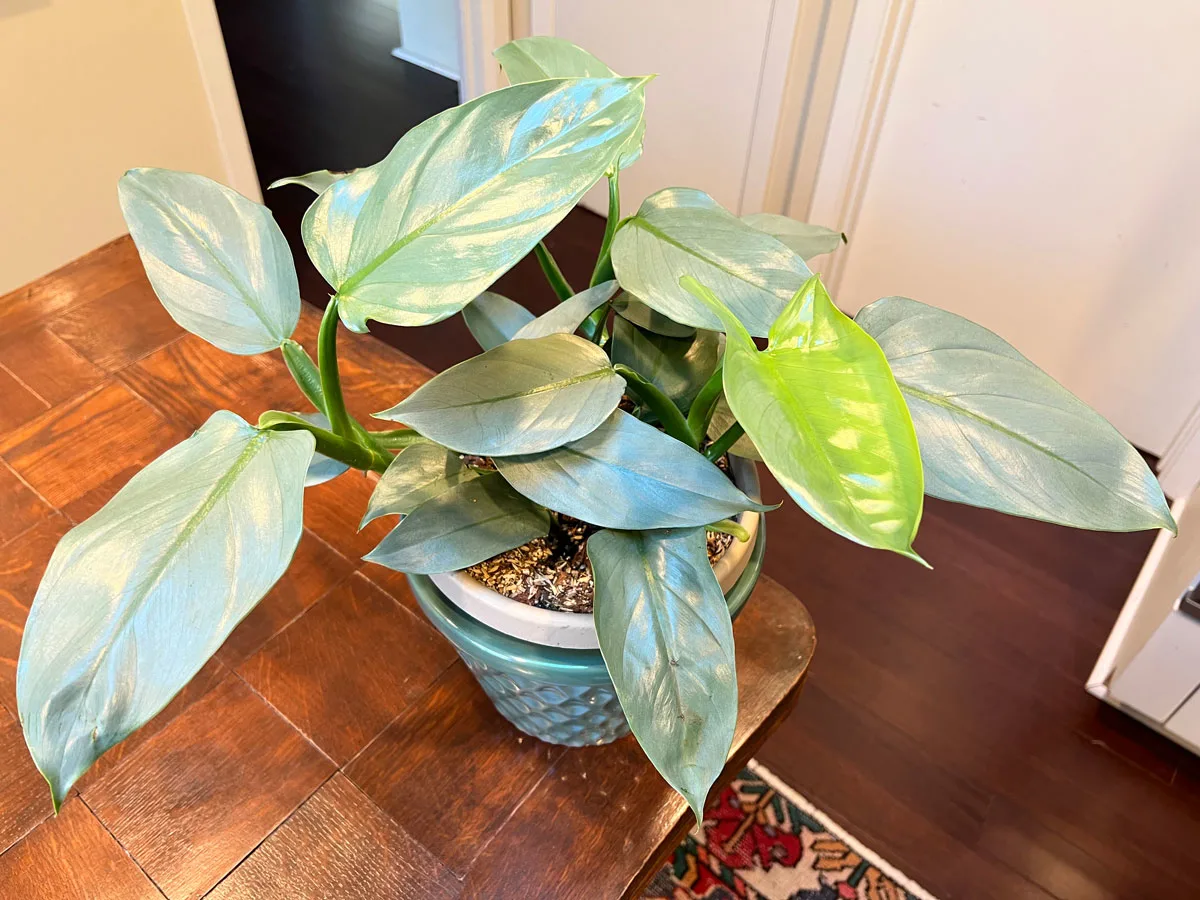Some of the links in this post may be affiliate links.
Did you know that rubber plants (Ficus elastica) can grow aerial roots? Many types of plants grow aerial roots and they can serve different functions. Keep reading to learn all about rubber plant aerial roots, why they grow, and what their purpose is.
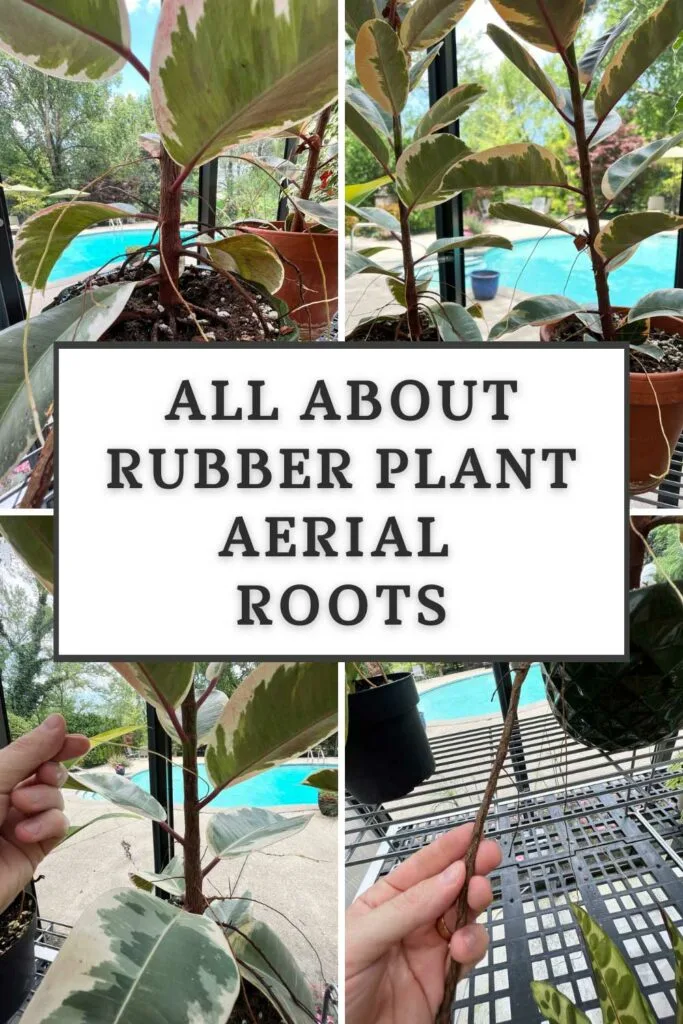
Plants can grow aerial roots for a number of reasons.
Think about plants like Monstera deliciosa, Pothos, and many Philodendron varieties that grow aerial roots to climb up trees or other support structures. They use the tree for support as they climb, and also to absorb additional water and nutrients.
Other plants like Tillandsia (air plants) use their roots mainly to attach onto trees, and they absorb most of their water and nutrients through their foliage through modified scales called trichomes.
Rubber plant aerial roots grow a little differently.
Table of Contents
RUBBER PLANT AERIAL ROOTS
HOW THEY GROW IN NATURE

Rubber plants (Ficus elastica) are huge trees in nature and they can easily grow over 100 feet tall. The tree trunk and branches eventually develop aerial roots. The aerial roots grow downwards until they reach the soil.
As those roots grow, they thicken up and almost turn into trunks, and they end up supporting the heavy branches of the tree.
In some parts of India, they will actually create a living bridge out of the aerial roots of Ficus elastica!
The roots are long and flexible and are stretched over a river. As the roots grow, they will strengthen over time and eventually hold the weight of human being walking across.
IF MY RUBBER PLANT DOESN’T HAVE AERIAL ROOTS, IS THERE SOMETHING WRONG?
Absolutely not! For the rubber plants that I’ve grown inside my home, they’ve never had any aerial roots at all.
It doesn’t mean that the plants are not healthy. So why don’t they grow indoors?
WHAT CAUSES THEM TO GROW?
I do have a couple of rubber plants in my greenhouse and those did start to grow aerial roots, some of which grew several feet long rather quickly!
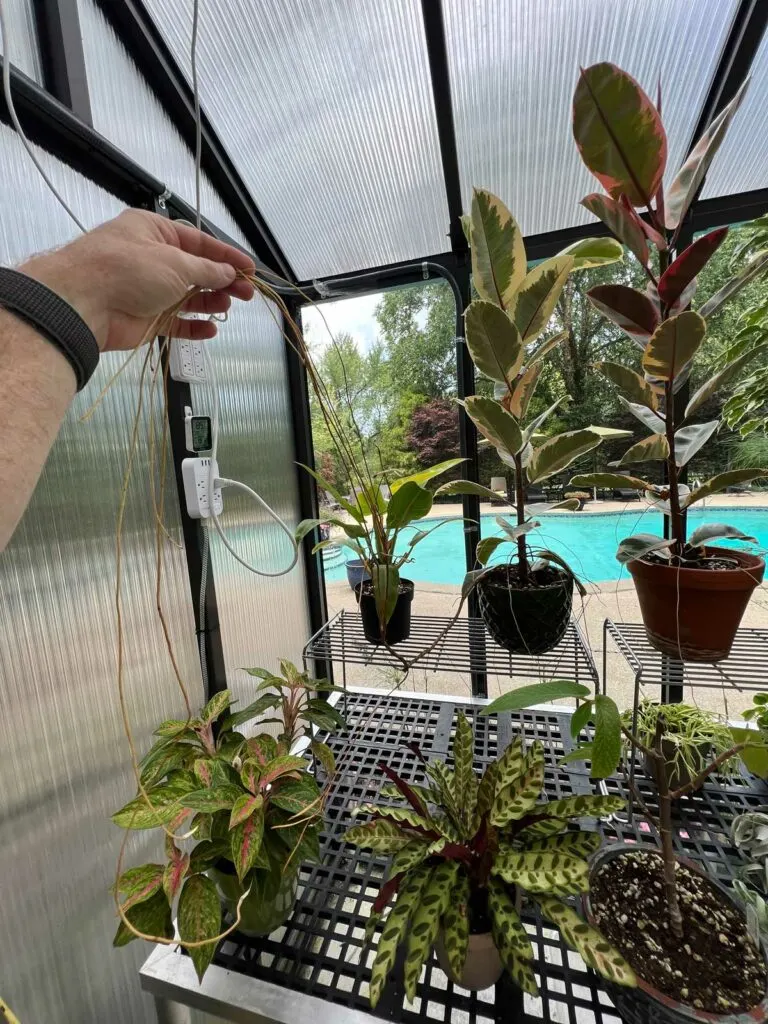
The warmer and humid conditions in the greenhouse caused the aerial roots to grow extensively.
As a result of heating and cooling systems inside of an average home, humidity levels are typically too low to encourage aerial roots to grow on rubber plants.
When they are just starting to grow, mine were a light, pale color, like the aerial root that I’m holding in my hand below.
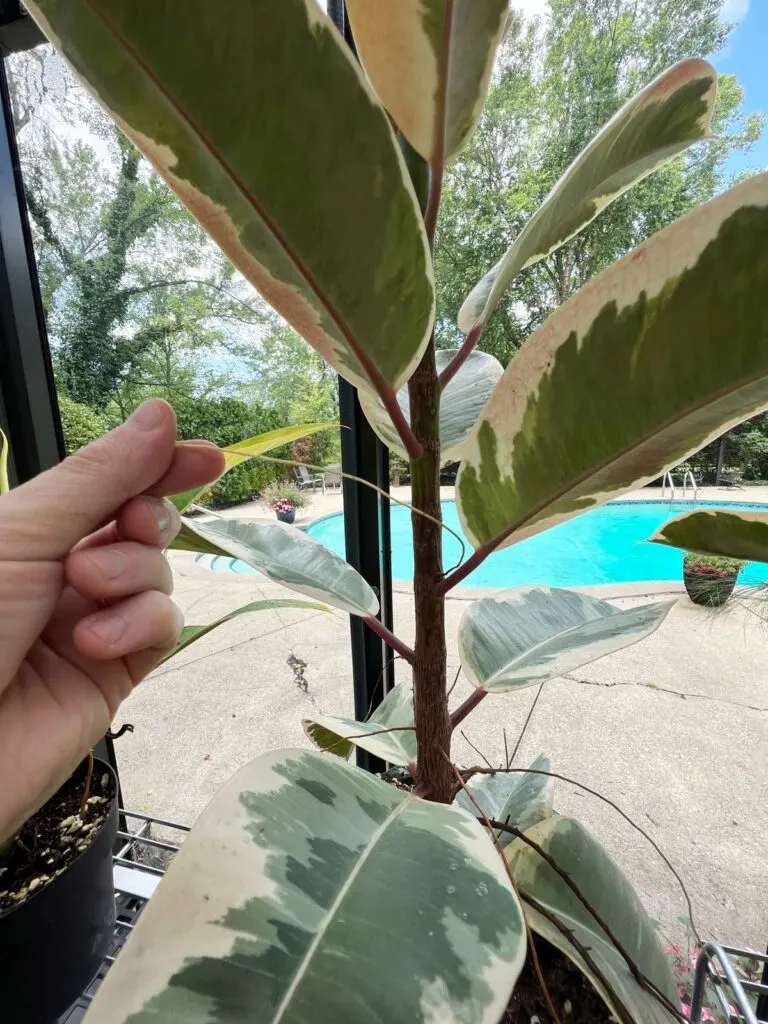
The aerial roots will grow right out of the trunk of the plant, and they can grow quite a few.
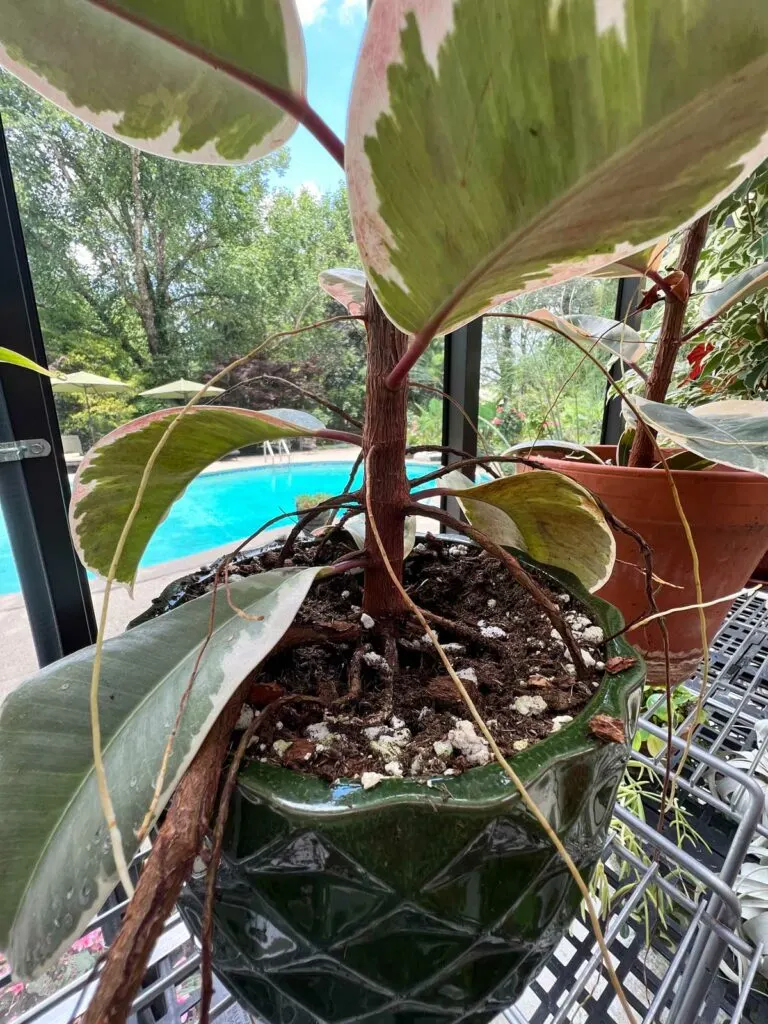
As they grow longer and age, they will form a bark on them and get quite thick.
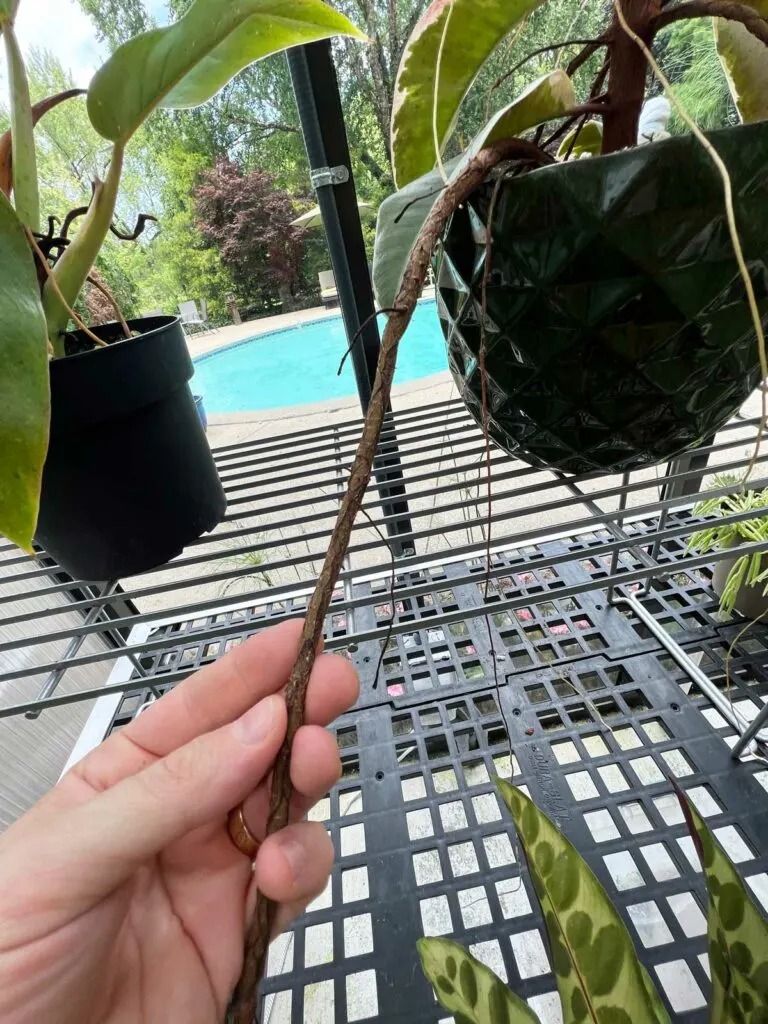
WHAT DO YOU DO WITH THEM?
One thing you can do is direct the rubber plant aerial roots onto the surface of the potting mix. They can grow into the soil, just like they do in nature.
For rubber plants, if you don’t like the looks of the aerial roots, you can safely trim them, or cut them off completely. You will not be harming your plants!
A word of caution though. This doesn’t mean that you should trim aerial roots off of all your plants. The one plant that you should NOT trim aerial roots off of are Phalaenopsis orchids.
Phalaenopsis, or moth orchids, use these roots to absorb moisture and nutrients, and they also photosynthesize as well. These aerial roots do grow readily on those plants, and you should mist them regularly so they don’t dry up.
When it’s time to repot your orchid, you can gently bury the aerial roots inside of the bark mix or sphagnum moss so you can more easily meet their moisture needs.
I hope you’ve enjoyed this post on rubber plant aerial roots. Do you have any aerial roots on your rubber plant? Comment below. I’d love to hear!

